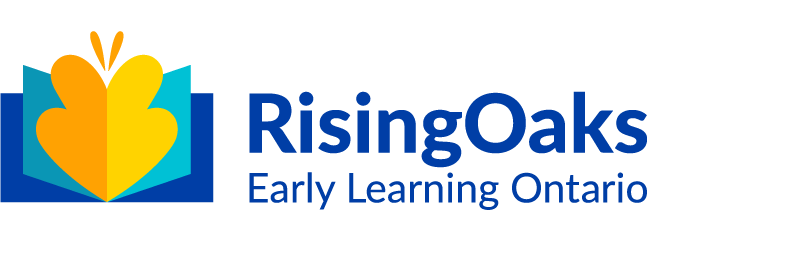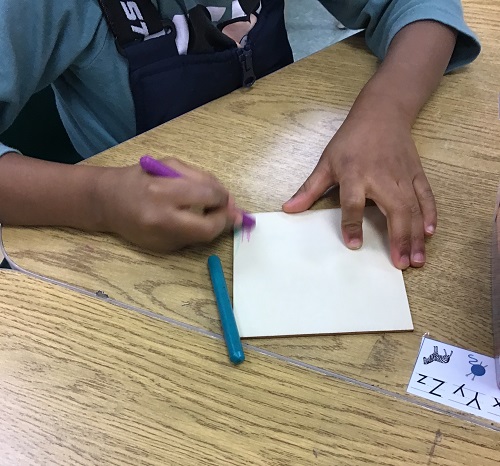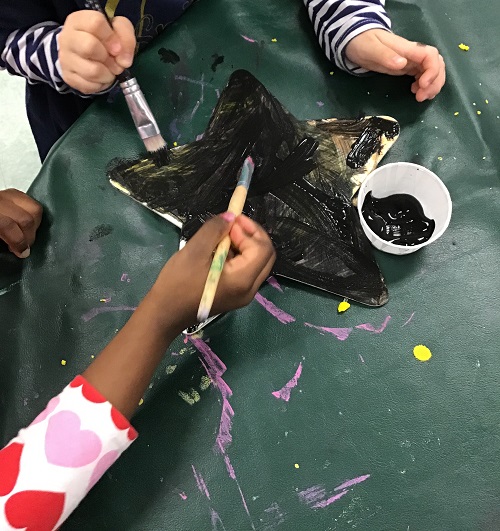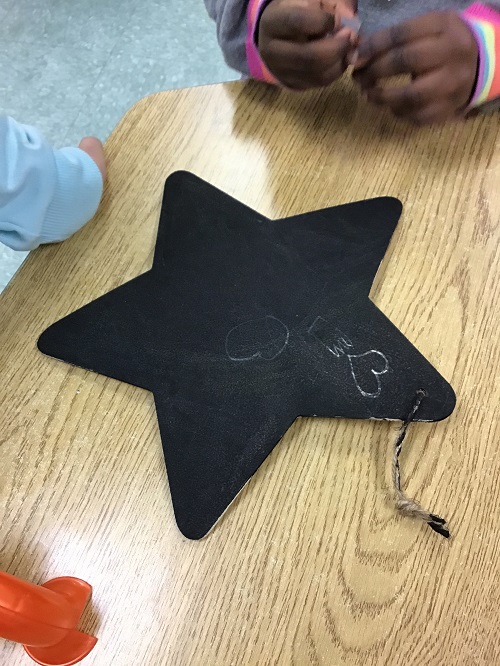Throughout the month, children have been demonstrating interest in literacy, specifically writing. Cari, for example, always walks around the classroom with Post-its and a pencil, writing everything she sees. Sometimes, when the younger children do not know how to write a specific word, they ask the older ones to help them, which shows that they have built a trusting relationship and the younger ones look up to the older ones.
Moreover, this group is into art, and every time there is an activity related to this, they all want to participate. Then, keeping this in mind and observing their interest in writing, a magic paper activity was proposed. We had to adapt because we did not have all the materials necessary to make it. Using some unfinished wood shapes, the children painted it as they wanted. Some created patterns using two or more colours, while others did it in pairs, making a fun mess of colours.
When the colouring part was done, the children had to paint it all black. They were still determining how it would work and questioned if this process was correct. After the black paint was dry, children could use something to scratch the paint and see the colours underneath. We tried to use the lid of a pen and toothpicks, but it did not work. Then, Nathan had an idea: to use the back of a pencil, the metal part where the eraser is. Although it worked, the colours under the paint needed to be more visible.
It was a learning experience, and we started to talk and think about how we could improve and make it work. After a lot of thinking, we came up with the idea that after colouring, we should make a coat of white glue. This would protect the colours, creating a barrier between them and the black paint. So, scratching the paint for writing or drawing whatever the children wanted would also be easier. Additionally, when all the black paint was gone, children would need to repaint it, making it brand new again.
This activity supported the development of their cognitive and fine motor skills, as well as improves their social skills and relationships with each other. Also, children were able to learn some science concepts and how-to problem-solve since it did not work out the first time, and they needed to figure out a way to make it work.
